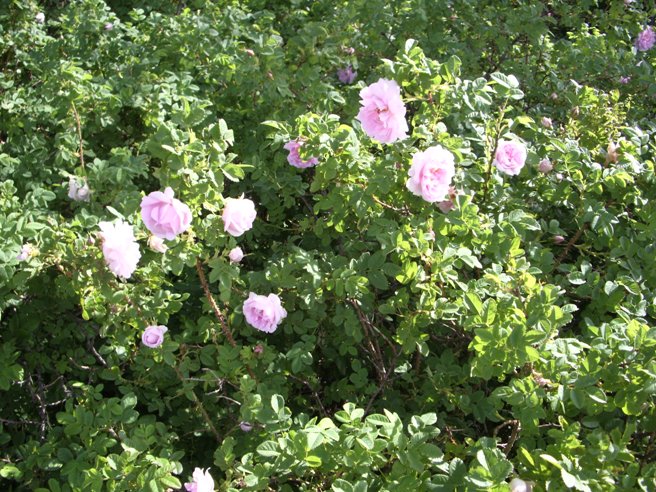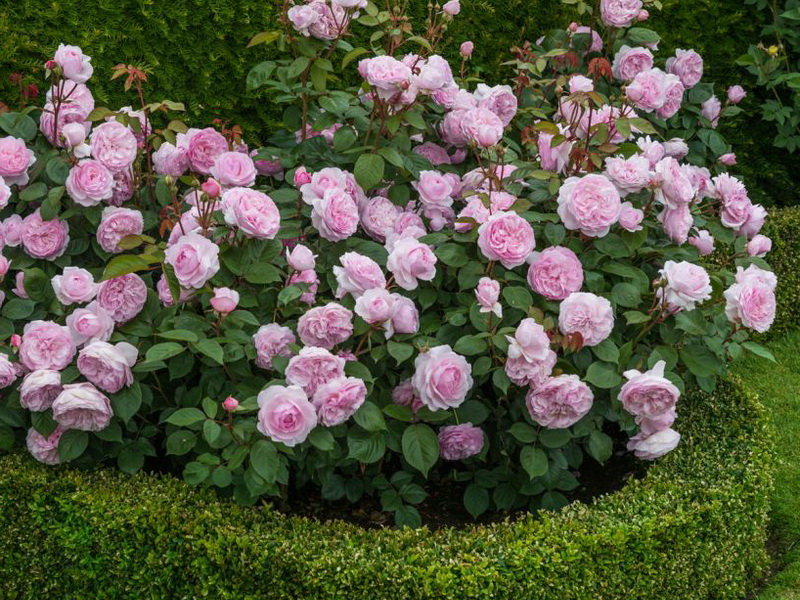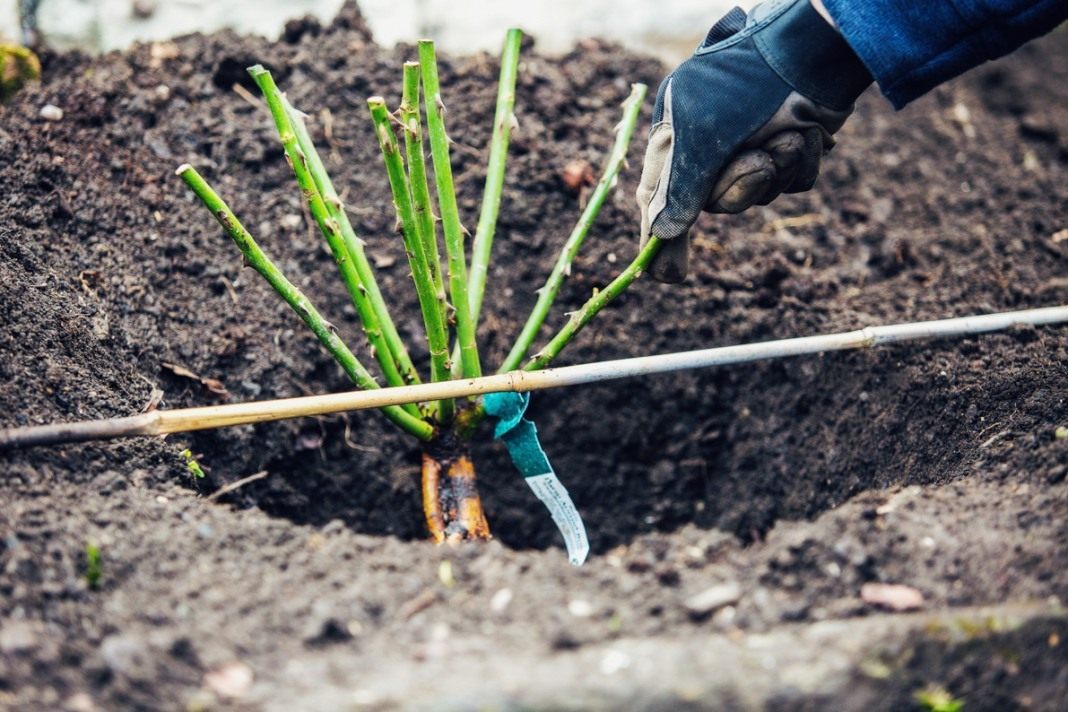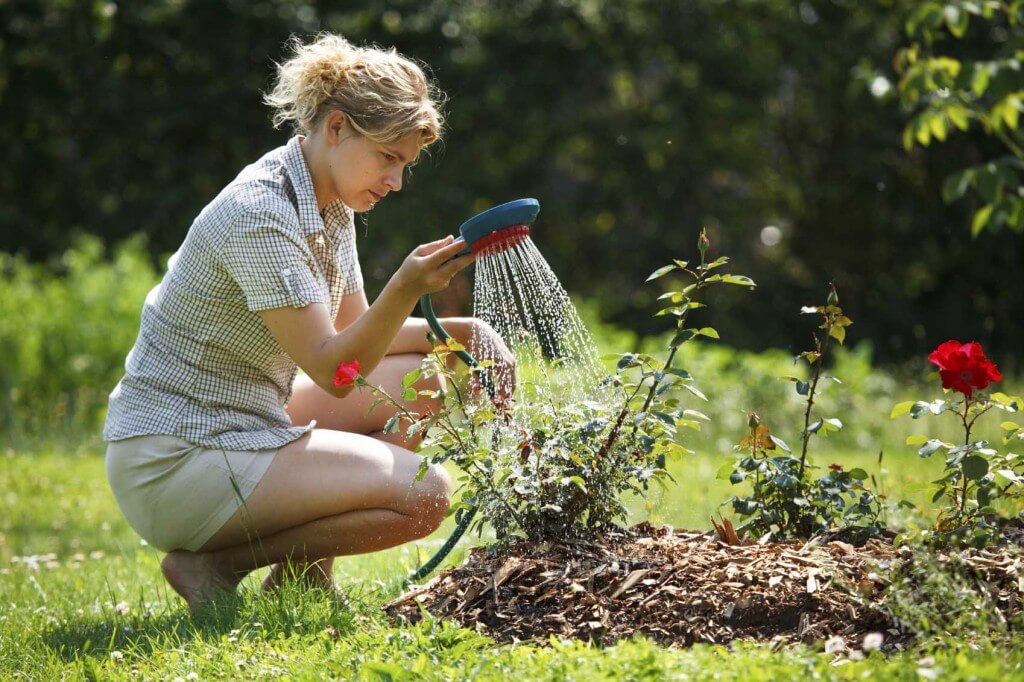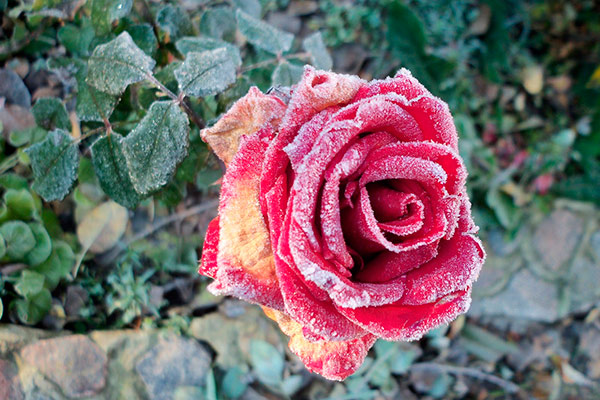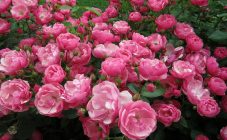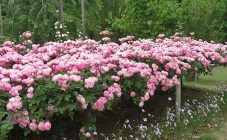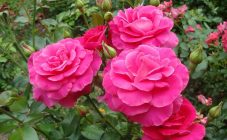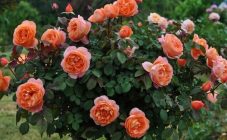Content:
Shrub roses belong to the Pink family, belong to the Rosehip genus, unite over 200 species and 200 thousand varieties of a wide variety of sizes, colors and shapes. Most of the known varieties were bred artificially, by crossing and selecting. Grown in parks and gardens to decorate the territory and in greenhouses for cut to create bouquets and festive room decoration.
Short story
The first mentions of roses are found in the treatises of ancient Roman philosophers. It was in ancient Rome, along with useful gardening (cultivation of fruit and medicinal plants), that they first began to grow roses. And even then the method of crossing was known for breeding new varieties.
After the collapse of the Roman Empire, monastery novices began to actively engage in gardening. Roses began to decorate even the territory of the papal palace.
For medicinal purposes, this plant was grown in the state of the Franks during the reign of the Carolingians. Since the 13th century, the gardens of France and England have been decorated with a variety of roses, work was actively carried out to develop new varieties.
Class description
Shrubs of different varieties differ in height (undersized, medium-sized, tall - from 0.25 to 3 m and more) and shape (there are varieties of the crown from narrow pyramidal to spreading).
Shoots of shrub roses are divided into main (mother plants) and annuals, which flower only during one season.
The foliage is complex, pinnate, the shape is elliptical or ovate with pointed serrated edges. There are 2 leaf-like stipules at the base of the leaf.
On peduncles 10-80 cm long, flowers are located, the diameter of which varies from 2 to 18 cm. Each flower contains 5-120 petals. There are varieties with both single flowers and inflorescences. The color range of varieties is different. There are varieties with a striped color, flowers painted in several colors at once, as well as flowers that change color during flowering.
There are roses with no scent, with a subtle and pronounced aroma. In addition to the main scent of damask rose, the fragrance range includes citrus, fruity notes, aromas of incense and spices.
Roses are perennial plants, there are both frost-resistant varieties and species that do not tolerate cold weather. Experienced florists make shelter for them for the winter, especially in regions with a harsh climate.
Classification
Handicraft roses are divided into different groups, depending on certain characteristics.
For example, by the number of petals, it is determined to which group a particular plant belongs:
- The simple ones are flowers with up to 7 petals.
- Semi-double includes varieties of roses with 8-20 petals.
- Terry ones have over 20 (up to 250-300) petals.
Separation also occurs depending on the appearance of the flower. The shape of the flowers is:
- conical;
- pompom;
- saucer-like;
- peony;
- cupped;
- flat;
- spherical;
- goblet.
It is also customary among gardeners to divide roses by color:
- Roses are mostly white in color with small areas, shades or transitions of other colors (red, lilac, pink) belong to the white mixture.
- Yellow petals with pink or red patches belong to the yellow mixture.
- Orange flowers with a yellow or violet sheen are in the orange mix group.
- The pink color of the buds with an orange, yellow or purple tint refers to the pink mixture.
- Bushes that bloom in red with patches of yellow or orange tones belong to the red mixture.
- Purple or lilac roses with pink, lilac, lavender tints are considered to be a purple mixture.
- Brown petals with red blotches are referred to as a brown mixture.
- Buds, the palette of which consists of 2 or more flowers, are multi-colored.
In 1796, the World Federation of Rose Society approved the classification of roses, in which plants are divided into classes and groups according to garden properties, and not according to the principle of similarity of origin:
- natural species;
- old garden roses;
- modern garden roses.
Varieties of varieties
Miniflora class, or Patio (spray roses), belonging to the group of modern garden roses:
- Jana. On one stem, there are 5-10 pale pink goblet flowers. Rosa Yana is multi-flowering, with medium disease and rain resistance. Has a weak aroma.
- Barbados. A height of 0.8-1 m with single large, rosette-shaped, pale pink flowers, the lower pale pink petals of which successfully contrast with the darker heart-shaped ones. The recurring rose of Barbados has a subtle scent and is moderately resistant to disease, rain and sunlight.
- Mirabel. An upright compact bush with a height of 0.7-0.9 m. On one shoot of the re-flowering Mirabelle, there are 3-5 goblet-shaped roses, painted red. Medium resistant to disease and rainy weather. The aroma is weak.
- Pink Flash. A re-flowering upright bush 0.5-0.7 m high. Rose Pink Flash stands out among others for the striped color of two-color goblet flowers: a rich pink color alternates with white or pinkish stripes. One stem is decorated with 5 to 10 flowers with a low odor. The shrub is moderately resistant to fungal infection and rain.
- Chococcino. An erect, re-flowering shrub with a stem length of about 0.6-0.7 m. On a stem, there are up to 5 goblet orange flowers with a brown tint. Chocochino roses have a low susceptibility to fungal infections.
- Ledreborg, or Snowflake rose. Repeated flowering, branched, 0.6-1 m high. On the stem grows up to 3 white, double, cup-shaped odorless roses. Disease resistant, but poorly resistant to rain.
- Bandolero. The Bandolero shrub rose has a stem length of about 0.5-0.6 m and yellow cupped flowers.
- Blossom Bubbles. An upright re-flowering variety 0.6-0.8 m high with a slight odor. It has densely double globular flowers of light pinkish-lilac color. There are up to 10 of them on the stem.
Shraba class belonging to the group of modern garden roses:
- Cardinal Hume. Strongly sprawling, re-flowering bush 1.2-1.5 m high. One stem has 5-10 rosette-shaped flowers of the color of ripe raspberries. Cardinal Hume roses are susceptible to black spot infestation.
- Grace. A well-branched, erect, re-flowering shrub 1-1.2 m high. On the stem of the Grazia rose, there are from 3 to 5 fragrant apricot flowers. At the beginning of flowering, it has a cup-shaped form, soon it changes to a saucer-shaped one. It tolerates rainfall well, has a low predisposition to diseases.
- Fiesta Flamenka. Continuously flowering sprawling bush 0.7-0.8 m high. Semi-double flowers, bright red, 5-10 pieces per shoot. The variety is highly resistant to disease.
Class of hybrid tea roses, which belongs to the group of modern garden roses:
- Tatjana. An upright, multi-flowering fragrant bush 0.7-0.8 m high. Tanya's flowers are single, goblet, dark red.
- Fiesta +.An upright, odorless, re-flowering shrub. Flowers are solitary, striped (yellow-pink), goblet, medium-double.
- Bianca. An erect, multi-blooming rose with shoots 0.7-0.8 m long. The buds are cast green, and, having blossomed, become completely snow-white. The shape is goblet. Flowers are mostly solitary, rarely up to 3 flowers per stem. The variety is highly resistant to diseases and rainy weather.
- Galina. White bush erect roses 0.6-0.8 m high. The flowers of the Galina variety are creamy white, goblet, with a pleasant well-pronounced aroma.
Class miniature roses, group of modern garden roses:
- Fireworks. Low-growing small-flowered re-flowering bush 0.35-0.5 m high. Bicolor flowers (red + yellow), up to 3 on the stem. Possesses excellent disease resistance.
- Fiesta Ruby. Small, sprawling, continuously flowering shrub with shoots 0.3 m long. Flowers - dark red rosettes, 5-10 per stem. The variety is resistant to rain and mottling.
In the class of polyanthus roses, the Marysa variety can be distinguished, which has a sprawling re-flowering bush. 5-10 small white semi-double flowers with a mild light aroma grow on the stem. Disease resistance - maximum.
Landing features
The optimal time for planting garden bush roses is autumn. In regions with very harsh winters, it is better to plant in the spring, after the snow melts and the ground warms up to temperatures above 10 ° C.
The substrate should be nutritious, neutral or slightly acidic.
Before placing the seedling in the ground, it is necessary to carry out preparatory work:
- Cut off deformed, affected root shoots and shoots, shorten shoots to 30 cm, roots - up to 20 cm.
- Submerge the roots in water for up to 12 hours. To speed up the rooting process and plant growth, you can add Kornerost or Kornevin to the soaking water.
- Dig out the required number of holes, the sizes of which are adjusted depending on the volume of the roots of the seedlings. Approximate parameters: depth - 30 cm, diameter - 50 cm.
- Cover the bottom of the hole with compost and wood ash in a ratio of 3: 1.
- Pour a bucket of water with a Heteroauxin tablet dissolved in it into the well.
Having prepared the seedling and the plot, you can start planting:
- Place the root system in a prepared hole.
- Cover with earth, periodically compacting the soil with pressing movements.
- Build a circular earthen embankment around the seedling to retain moisture after watering.
- Spud the seedling to a height of 15 cm, shade it for 14-15 days.
- Water after 2 days.
Follow-up care
The first year is devoted to the formation of the bush. Formative pruning is performed to give the shrub the selected crown shape. In spreading varieties, lateral shoots are cut off to the outer bud, in erect varieties, the central stems to the inner bud. End of spring - beginning of summer is reserved for clothespins, peaking buds are removed. Then the buds should form, after which they should also be removed. Watering is carried out 3 times a week.
Starting from the second season, standard actions are carried out. Sanitary pruning is carried out to stimulate the growth of the bush, dried, affected, frail shoots are removed.
Water abundantly once a week by drip method. In hot weather, about 10 liters of water goes under the bush. With the arrival of autumn and in rainy weather, the volume and frequency of watering are reduced.
During the season, it is necessary to carry out 3-4 dressings with nitrate and complex fertilizers.
You should regularly get rid of weeds and loosen the area. With excessive density of growing roses, plants should be thinned and transplanted.
Attacks by harmful insects
Rose bushes are attacked by pests:
- green rose aphid;
- common spider mites;
- leaf beetles;
- sawflies;
- nutcrackers;
- rose gold;
- rose leafhopper;
- thrips;
- stem gall midges;
- earwigs;
- nematodes.
To prevent the appearance of insects, it is necessary to introduce preventive measures: with the onset of spring, before the buds swell, treat the bushes with insecticides.
Also for prevention, roses are sprayed with a decoction of garlic or onions.
Diseases
Many new varieties of roses are resistant to diseases, which cannot be said about old garden varieties that become infected with powdery, downy mildew, rust, black spot. Fungicides and timely sanitary pruning are the means to combat them.
With a lack of iron and other nutrients in the soil, the bushes can be affected by a disease called chlorosis. To protect the plant from infection, it is necessary to regularly analyze the soil content and carry out work on its fertilization.
Shrub rose is a flower that is rightfully called "royal". The variety of varieties is striking in its shapes, colors and aroma. The plant will adorn any site, and no lady will refuse to receive a bouquet of these beautiful flowers as a gift.

